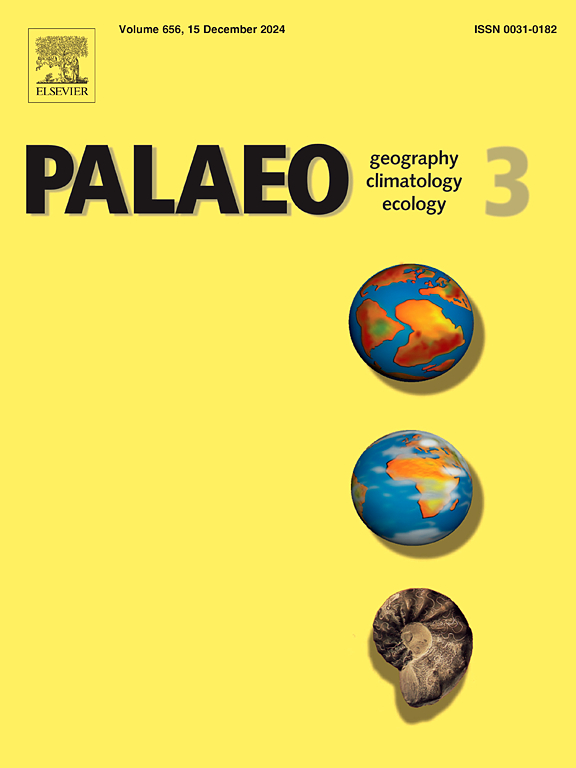Late Eocene to Early Miocene environments, vegetation and climate in Southeastern France documented by palynology
IF 2.6
2区 地球科学
Q2 GEOGRAPHY, PHYSICAL
Palaeogeography, Palaeoclimatology, Palaeoecology
Pub Date : 2025-02-01
DOI:10.1016/j.palaeo.2024.112625
引用次数: 0
Abstract
The Eocene–Oligocene Transition (EOT) is crucial for understanding the climate evolution of the Earth but is poorly documented in the terrestrial domains. A pollen record from the early Priabonian to the late Aquitanian encompassing the EOT was produced for thirty-three locations in Southeastern France. Changes in lowland flora and vegetation were documented based on the shift from dense forests with tropical-subtropical plants to open shrublands rich in xeric plants, paving the way for the future Mediterranean landscapes. Cupressaceae, particularly Tetraclinis, and Ephedra, occupied a proeminent place in the newly structured vegetation. Palaeolimatic fluctuations were quantified using the Climatic Amplitude Method, revealing the fact that the EOT was mainly characterized by a decrease of 7–9 °C in winter temperatures and by an increase in overall temperature and rainfall seasonality. Using the climatostratigraphic approach further improved the regional chronostratigraphy. This climate change occurred during a period and in a region marked by an extensive geodynamic upheaval. This work documents the pathways of some influential marine incursions of the Mediterranean Sea earlier than is usually considered. Finally, the deposition of evaporites in lakes is interpreted as the result of a combination of different factors, including the entrance of marine waters in the terrestrial realm, a decrease in regional rainfall, a decrease in the supply of water by rivers and increased seasonality. Palaeoelevations of nearby mountains were also estimated using pollen grains transported from highlands and reconstructed palaeotemperature of the lowlands.

求助全文
约1分钟内获得全文
求助全文
来源期刊
CiteScore
5.90
自引率
10.00%
发文量
398
审稿时长
3.8 months
期刊介绍:
Palaeogeography, Palaeoclimatology, Palaeoecology is an international medium for the publication of high quality and multidisciplinary, original studies and comprehensive reviews in the field of palaeo-environmental geology. The journal aims at bringing together data with global implications from research in the many different disciplines involved in palaeo-environmental investigations.
By cutting across the boundaries of established sciences, it provides an interdisciplinary forum where issues of general interest can be discussed.

 求助内容:
求助内容: 应助结果提醒方式:
应助结果提醒方式:


